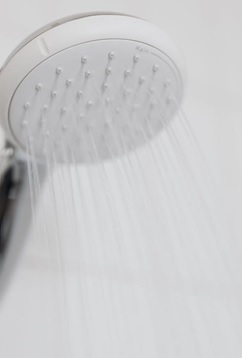Why Must Water Holding Tanks Be Stored at Such High Temperatures?
Nov 6th 2023
Residential, commercial, industrial, and institutional settings need hot water. It’s used to maintain precise processes, for cooking and cleaning, for the purposes of bathing and handwashing, and in some cases, for the purposes of hydronic heating.
Therefore water heaters are an essential component of almost any plumbing system, commercial or otherwise.
You may be familiar with the fact that most experts recommend that hot water heaters heat and maintain water in a holding tank at a minimum temperature of 140℉.
This is too hot to be used for the purposes of bathing, handwashing, and for some cleaning applications - but necessary nonetheless. Let’s take a closer look at what and what can be done about it.
It All “Boils” Down to Sanitation
Excuse the pun in the title, but there is a good reason that hot water heaters or hot water holding tanks must be maintained at temperatures of at least 140℉. It has to do with disinfection and sanitation.
Temperatures lower than this - such as in the range closer to 120℉ that is more amenable to washing and bathing, create an environment that is far too susceptible to the growth of pathogens like bacteria.
Many experts agree that temperatures around 120℉ serve almost as an ideal breeding ground for bacteria such as Legionella pneumophila, the bacterium that is responsible for Legionnaire’s Disease. Warm water also offers conditions favorable to the growth of other pathogens, like coliform bacteria and cryptosporidium.
However, while these bacteria will proliferate in favorable conditions at around 120℉, hotter water - 140℉ minimum - rapidly inhibits their growth and kills them.
Maintaining the water in a hot water heater above that level will help ensure that conditions are not favorable to the growth of bacteria that can contribute to or cause diseases in people.
However, despite the fact that these protocols help to control the risk of infection and sickness, they carry their own risks that must be managed.
The Risks of Scalds
Maintaining the hot water in a hot water holding tank or a hot water heater above 140℉ will help prevent the growth of bacteria - but that water is also much too hot to come into contact with humans.
It’s acceptable if the water is to be used for purposes such as heating or for other industrial processes wherein it will not come into direct contact with users, but if the water is to be used for cleaning, handwashing, or bathing, it is too hot, dangerously hot in fact.
In five seconds, water at this temperature can cause significant scalding that results in tissue destruction and death. Scalds can be damaging not only to the skin but to underlying tissue as well. What’s worse, the damage that arises from scalding is akin to burns from fire and can result in secondary infections.
Complicating the issue is that some individuals with slower reaction times - like children and the elderly - are at a higher risk of scalding than others. They can be burned before they are able to withdraw from the water.
There is a conundrum; water in a system must be kept hot enough to kill bacteria or at least inhibit their growth, which is too hot for contact with users.
The solution to this comes in the form of a thermostatic mixing valve.

What a Thermostatic Mixing Valve Does
Thermostatic mixing valves allow water to be kept at a temperature hot enough to prevent the growth of dangerous bacteria and mix it before delivering it to end-users at a lower temperature that will not cause scalds.
Thermostatic mixing valves do not simply limit the risk of scalds while enabling hot water tanks to be maintained at a higher water temperature. They offer an additional benefit as well - they extend the supply of hot water available through more economic delivery.
Because thermostatic mixing valves meter out hot water as needed, they provide a greater available supply of hot water to the end-user.
However, over time, thermostatic mixing valves can be damaged or fail, requiring maintenance, repair or replacement.
Signs You May Need Commercial Thermostatic Mixing Valve Repair Kits
Keep your eye out for the warning signs that a TMV may need to be repaired or replaced. If you notice any of the following signs, you may need commercial thermostatic mixing valve repair kits.
●Water is too hot, too cold, or inconsistent.
●Inconsistency in flow rate.
●Water damage on the floor underneath a TMV.
●Noticeable scale or corrosion on the exterior of the TMV.
Any of these warning signs, separately or together, may indicate that you need to invest in commercial thermostatic mixing valve repair kits. We carry a wide range of commercial TMVs and parts from Bradley, Zurn, Simmons, Lawler, and countless other manufacturers.
Don’t let the signs go unnoticed. If you need to make a repair fix it ahead of time with the appropriate parts. Contact us at 1-833-251-4591 if you have any questions about our products or pricing.

